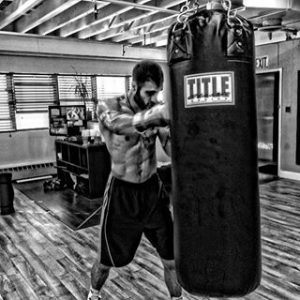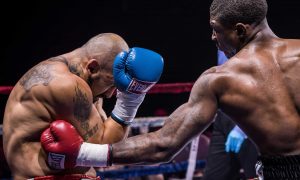Are there considerations when training women?

As with a male the same principles apply, big basic compound movements are king, exercises such as squats, deadlifts, bench press etc. will be of benefit when it comes to performance enhancement or body transformation.
Women although usually smaller and with less muscle mass do have the potential to gain the same muscle and strength (relative to lean mass) as men. Meaning the structure of a programme that features the principles of intensification, accumulation, rate of force development (RFD) etc. should be the same and works just as well whether for a male or female.
Although there are recognised lengths of rest periods depending on the goal, it needs to be noted that a person who is taller or has more muscle generally needs more time to recover between sets, especially when performing the big compound movements. Meaning women, especially trained women can recover faster.
Women also require less rest than men because they have greater muscular endurance, a woman can have her rest decreased by 30% and because females can recuperate faster even from a maximal effort the rest time between sets can be reduced and she can still get strength gains.
A positive aspect of being able to take less rest is that more sets can be done in the same time and so a greater volume with the same intensity eg. 80% 1RM will achieve a greater response.
A difference that needs to be taken into account when designing resistance programmes for women is that at a given percentage of 1RM a female can generally complete a higher number of reps than a male.
Women can achieve very good results in body composition changes with higher rep ranges especially novice or untrained women. Not only will a lot of women feel more comfortable with sets of higher reps but they will achieve rapid results with sets as high as 15-20 reps for instance.
If training to get leaner, fat loss whole body workouts work well and are a wise choice. Women tend to prefer the general fatigue that comes with whole body workouts as opposed to the local fatigue that comes from a split and beginner female lifters seem to do very well on circuit type workouts.
The above recommendations are targeted at females with little/no weight training experience, women with a performance background and/or higher strength levels can excel on the same programmes as men i.e. low reps at higher intensities with longer rest periods.
Two workouts made famous by coach Charles Poliquin that work well with women are German Body Comp (GBC) and German Volume Training (GVT). Both of these workouts have shorter rest periods than the average male gym user would typically use.
GBC is designed to burn fat with a welcome side effect being it will also add some muscle.
GVT is designed to add muscle and this new muscle will result in fat loss caused by boosting the metabolism and so burning many more calories at rest.
GBC or as it is also called Lactic Acid Training is a programme where by the majority of the exercises are compound and are prescribed with short rest periods. The short rest periods lead to a high production of lactate, this high production of lactate leads to a significant increase in growth hormone (GH) which in turn results in rapid fat loss.
Example of a GBC workout:
Order Ex. Reps Sets Tempo Rest
A1 DB Step Ups 15 – 20 2 2-0-1-0 75s
A2 BB Pull-over 12 – 15 2 3-0-1-0 75s
B1 Neutral Grip Chin Up 6 – 8 2 3-1-2-0 60s
B2 Stand Calf Raise 12 – 15 2 2-1-1-0 60s
C1 BB RDL 10 – 12 2 3-0-1-0 75s
C2 HP Crunch 12 – 15 2 3-1-1-0 75s
D1 EZ Bar Reverse Curls 10 – 12 2 3-0-1-0 60s
D2 Seated Supported EZ 10 – 12 2 3-0-1-0 60s
Bar French Press
HP – High Pulley. Tempo – 3-0-1-0 = 3 secs negative, no pause between negative and positive, 1 sec positive, no pause between positive and negative. 1st number is always the negative eg. squat 3-0-1-0 would be 3 secs down, no pause at the bottom, 1 sec up, no pause at the top.
GVT works very well when used with big lower body exercises such as BB Back Squats.
Example of a GVT workout: 3 x week for 3 weeks
Day Exercise Reps/Sets %1RM Tempo Rest
1 Back Squat 10 x 10 60% 4-0-X-0 60s
2 Back Squat 10 x 10 62.5% 4-0-X-0 60s
3 Back Squat 10 x 10 65% 4-0-X-0 60s
4 Back Squat 10 x 10 67.5% 4-0-X-0 60s
5 Back Squat 10 x 10 70% 4-0-X-0 60s
6 Back Squat 10 x 10 72.5% 4-0-X-0 60s
7 Back Squat 10 x 10 75% 4-0-X-0 60s
8 Back Squat 10 x 10 77.5% 4-0-X-0 60s
9 Back Squat 10 x 10 80% 4-0-X-0 60s
10 Back Squat 10 x 10 82.5% 4-0-X-0 60s
The progression in % 1RM workout to workout is an example. In the first workout 60% 1RM should be used, the % should be raised each workout by 2.5-5% but only when 10 sets can be completed.
Whilst completion is the ideal, it needs to be noted that it is not the goal, the goal is for a drastic change in body composition, therefore if that is achieved then the programme was successful.
The average woman should not worry about ‘getting big’ from resistance training (if it was that easy every guy in the gym would be massive), there are some genetic freaks out there that like their male counterparts only have to look at a weight and their traps grow. These women are very few and far between but they do exist. Sometimes these women for one reason or another want to look healthy and lean but not look like they ‘lift’.
Example of a circuit type workout that is usually successful for women that want no/very little muscle growth.
Order Exercises Reps Sets Tempo Rest
A1 FFE DB Split Squat 12-15 4 2-0-10 30s
A2 Close NG Lat Pulldown 12-15 4 2-0-1-1 30s
A3 Lying Hamstring Curl 12-15 4 2-0-1-0 30s
A4 Incline DB Bench Press 45° NG 12-15 4 2-0-1-0 30s
A5 Prowler Push Light For Time 45s 4 1-0-1-0 30s
A6 Reverse Hyper 8-10 4 2-0-1-2 120s
B Battling Ropes 40s 3 X-0-X-0 60s
NG – Neutral Grip.
Women, irrelevant of training experience tend to have a dramatic imbalance between the Quads & Hamstrings with the Quads tending to be dominant. With this is mind it is always a good idea to focus a lot of attention on the posterior chain. Also because of the greater Q Angle that females have at the hip special attention should be placed on the position of the knee when women are performing athletic movements.
For those that train pregnant women, strength training should be done at a higher intensity with lower reps eg. 1-5, avoiding workouts that cause excessive perspiration. Pregnant women can perform most exercises well but using machines such as the adductor and abductor ones that are seen so often in commercial gyms should be avoided because of potential instability problems caused by the hormone Relaxin.
combat sports training, combat strength training, mma fight training, combat workouts, combat athlete training, boxing training, fighter training.




